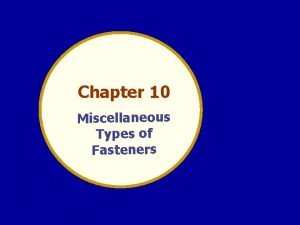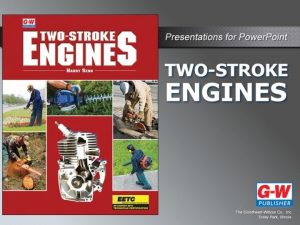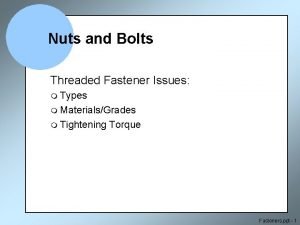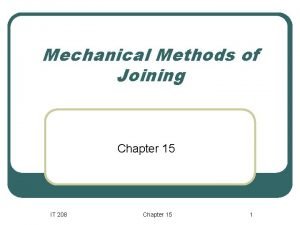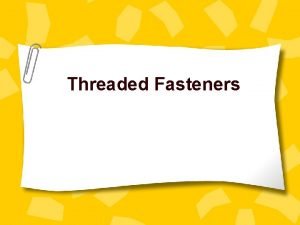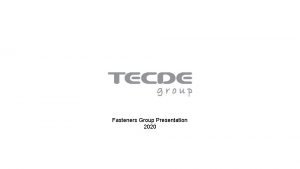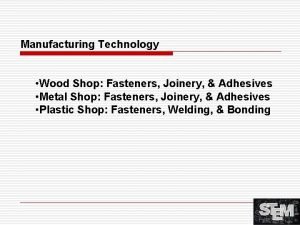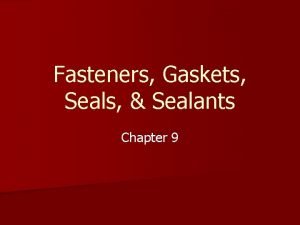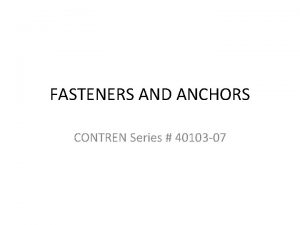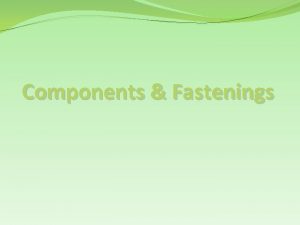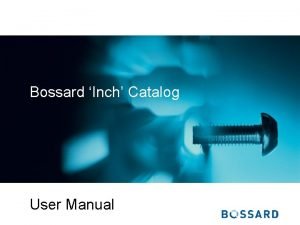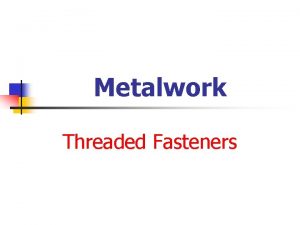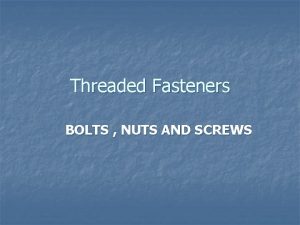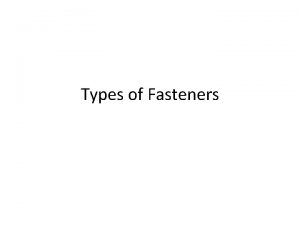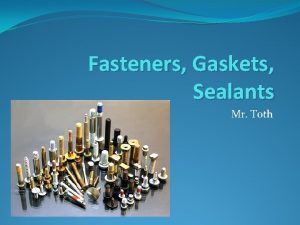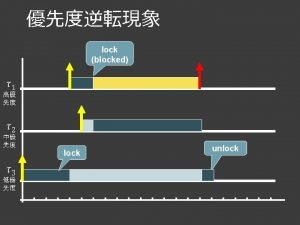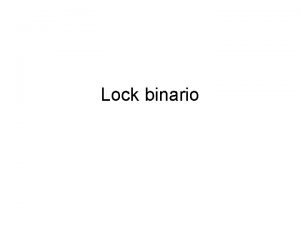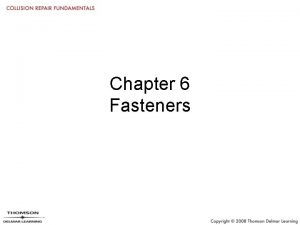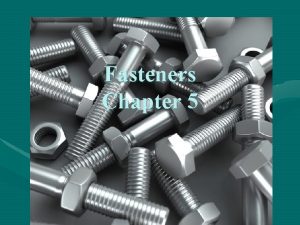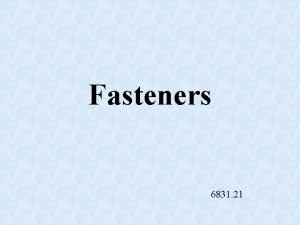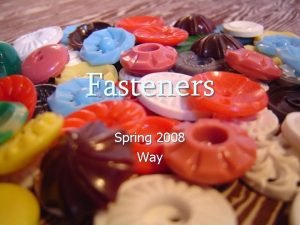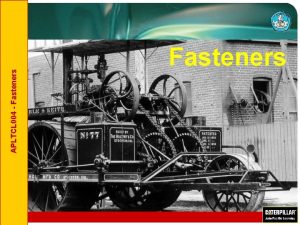Chapter 10 Miscellaneous Types of Fasteners LOCK NUTS



















- Slides: 19

Chapter 10 Miscellaneous Types of Fasteners

LOCK NUTS and LOCKING DEVICES Many different locking devices are used to prevent nuts from working loose. A screw thread holds securely unless the parts are subject to impact and vibration (e. g. as in a car engine). A common device is the jam nut (A). Slotted nuts (L) and castle nuts (M), to be held with a cotter pin or wire, are commonly used in automotive industry. Round nut locked by means of setscrew is shown at B. A brass plug is placed under the setscrew to prevent damage to the thread. This is a common type of adjusting nut used in machine-tool practice. C is a locknut, in which the threads are deformed after cutting. D, E and F are spring washers, also commonly used for locking.

WASHERS Plain washers are commonly used in the assembly of nuts and bolts to provide a smooth surface for the nut or bolt to turn against. Specifications are given by inside dia. , outside dia. , thickness, type. For example, 1. 375 x 2. 500 x 0. 165 type A plane washer would be used with 1. 25 in. fastener (App. 27 A) Lock washers prevent a fastener from loosening due to vibration or stress. Spring washers (D, E, F) sometimes called tooth lock washers. G, H are thicker and known as helical-spring lock washers.



KEYS Key fasteners are used to prevent the rotation of wheels, gears etc. on their shafts. A key is a piece of metal placed so that part of it lies in a groove, called "key seat", cut in a shaft and part of it fits into a groove cut in a hub, called "key way". Therefore, after the assembly locked together by the key, the shaft and hub can not rotate relative to each other. .

KEY TYPES The simplest key is the square key, placed half in the shaft and half in the hub. A flat key is rectangular in cross section, used similarly as square key.

MISCELLANEOUS FASTENERS The gib-head key is tapered on its upper surface and is driven in to form a very secure fastening. The Pratt & Whitney key is rectangular in cross section and has rounded ends. It is placed two-thirds in the shaft one-third in the hub. The most common key is the Woodruff key. This key is flat segmental disk with a flat (A) or round (B) bottom.





SPECIFICATION OF KEYS Keys are specified by note or number depending on type. Ex: 1/2 *3/8 Flat key 2. 5 Lg Pratt and Whitney Key No. 6 DIMENSIONING FOR KEYS


For very heavy duty, keys are not sufficiently strong, splines (grooves) are cut in both shafts and hubs , arranged so that they fit one within other.

SPRINGS A spring can be defined as an elastic body designed to store energy when deflected. Springs are classified according to their geometric form: helical or flat.

SPRINGS TYPES OF SPRINGS


 Types of fasteners
Types of fasteners Types of threaded fasteners
Types of threaded fasteners Types of mechanical fasteners
Types of mechanical fasteners Bolt manufacturing process ppt
Bolt manufacturing process ppt Chapter 8 fasteners gaskets seals and sealants
Chapter 8 fasteners gaskets seals and sealants Chapter 15 using fasteners
Chapter 15 using fasteners Fastening
Fastening Non threaded bolt
Non threaded bolt Schraube fasteners turkey inc
Schraube fasteners turkey inc Axially loaded members
Axially loaded members Building materials fasteners and adhesives
Building materials fasteners and adhesives Manufacturer for wood joint fasteners
Manufacturer for wood joint fasteners Flexco bolt solid plate fasteners
Flexco bolt solid plate fasteners Annular snap fit
Annular snap fit Automotive fasteners gaskets and sealants
Automotive fasteners gaskets and sealants Fasteners
Fasteners Examples of fasteners in sewing
Examples of fasteners in sewing Bolt
Bolt Snow leopards diet
Snow leopards diet Bossard catalog
Bossard catalog
